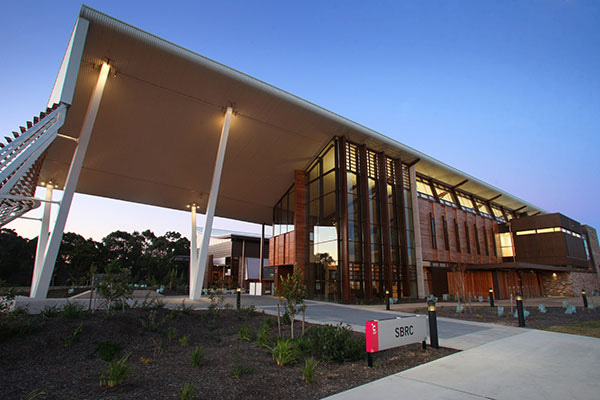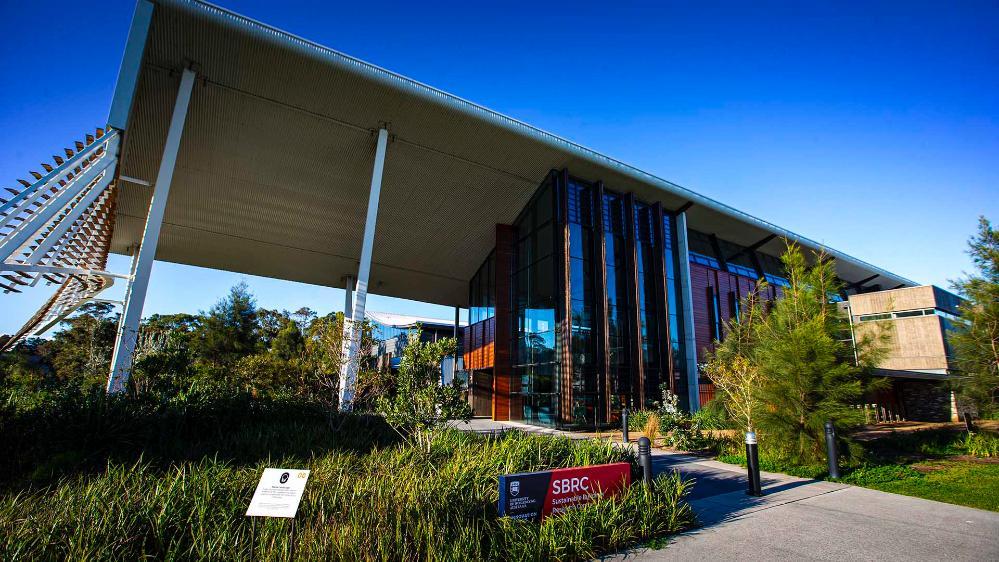November 20, 2014
Green building scheme review adds yet more policy uncertainty
In Australia, commercial building retrofitting is among the most economically attractive ways to reduce emissions
Australia’s policies to cut greenhouse emissions have been shrouded in uncertainty over the past few months. The contentious Renewable Energy Target review and the swapping of the carbon price for Direct Action have garnered most of the headlines. But another policy, which has quietly been cutting emissions for the past four years, is now also under scrutiny.

The Sustainable Buildings Research Centre at UOW's Innovation Campus
The Commercial Building Disclosure (CBD) program is the latest federal environmental policy to be placed under review. The scheme encourages energy efficiency by requiring owners to detail whether their buildings are high or low energy users. It has strong support in both industry and politics.
The review creates uncertainty about the future of a proven program which has been effective in improving energy efficiency.
The introduction of the CBD program in 2010 radically improved the visibility of building energy consumption and operating costs to prospective owners and tenants. This has created an effective market-based incentive to improve energy efficiency, without significant regulatory involvement or administrative overheads.
Improving the energy efficiency of existing buildings is one of the quickest, easiest and cheapest ways to cut greenhouse emissions. Some 85% of Australia’s buildings were built before energy-efficiency regulations were introduced, and turnover is slow: just 1-3% of buildings are replaced each year. Commercial buildings account for about 10% of Australia’s greenhouse emissions.
Cutting emissions saves money as well. The Intergovernmental Panel on Climate Change reports that cutting emissions in the building sector by 30% would have net economic benefits. In Australia, commercial building retrofitting is among the most economically attractive ways to reduce emissions.
How does the CBD program work?
The CBD program, also known as “mandatory disclosure”, encourages commercial building managers to drive emissions down. The scheme requires the disclosure of energy efficiency information on a building whenever a commercial office space larger than 2,000 square metres is offered for sale or lease. This includes giving the building a star rating (under a scheme called NABERS), detailing the efficiency of its lighting, and making recommendations for further improvements.
This empowers potential tenants or buyers to choose more efficient buildings, and thus creates market pressure for owners to improve their energy efficiency. Since the announcement of the program, the average star rating has jumped from 3.3 to 4.1, while the amount of floor area covered by the NABERS rating scheme has almost doubled.
Individual buildings rated more than once whilst CBD has been in operation have reduced their energy use by an average of 8.6%. This would deliver an almost 1% reduction in Australia’s total greenhouse emissions if implemented across the entire commercial building stock.
The program has been particularly effective at targeting smaller, poorer-performing buildings, in contrast to flagship office buildings where being green is already a key consideration. Compared with other schemes targeting this sector the market-based CBD program has been a huge success.
So why review the scheme?
The CBD program has strong support from both the property and sustainability industries, including the companies that work to retrofit old buildings. The Green Building Council of Australia has singled out the scheme as playing an important role in raising awareness and setting minimum standards for energy efficiency.
The review will be carried out by ACIL Allen, the company that also provided modelling for the controversial Renewable Energy Target Review. It will advise on whether the scheme should continue or be scrapped, but will also be free to make broader recommendations that it be broadened out to include smaller buildings or non-commercial properties. This wide remit has already been blamed for creating damaging uncertainty in the energy-efficiency industry.
Meanwhile, the federal government has outlined a method for including commercial building emissions reductions in the Carbon Farming Initiative, as part of the newly approved Direct Action plan. The proposed method uses the NABERS star rating of a building as a measure of energy consumption.
In some ways the CBD program would be a natural fit with the proposed method. A building owner required to get a star rating under mandatory disclosure could potentially then bid for Direct Action funding to improve it. But Direct Action, which is focused primarily on large projects, requires bidders to achieve minimum emissions reductions of 2,000 tonnes of carbon dioxide per year – 10 times larger than the level advocated for by the Property Council of Australia.
This means that an average commercial building attempting to cut its energy use by a very ambitious 30% would need to have a floor area of at least 18,000 sq m to be eligible for Direct Action. This would exclude almost 80% of office buildings, unless the savings from various different buildings were lumped together to form a bigger project.
It seems unlikely that the CBD program will be entirely scrapped, particularly as it has proved to be effective in cutting emissions without direct government subsidies. Its alignment with Direct Action plan also further strengthens the case for the CBD to be retained in its current form.
But there’s a danger that the large minimum emissions reductions required for Direct Action funding and ongoing policy uncertainty will act as barriers to efficiency improvements being made in much of the commercial building sector.
![]()
This article was originally published on The Conversation. Read the original article.
